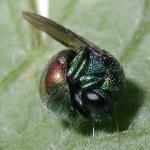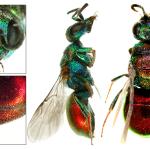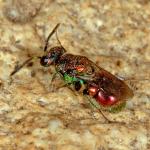Identification keys and general biology are given in Morgan (1984), Kunz (1994) and Mingo (1994).
Recorded from Cornwall to Kent and north to Cumberland and South-east Yorkshire with four records from Scotland (Wigtownshire, Berwickshire, East Perthshire and Moray). Found in Ireland, the Isle of Man, the Isles of Scilly and the Channel Islands.
Overseas, found in many parts of Europe; particularly northern and central countries, less so in the south and east (Sweden, Finland, Denmark, The Netherlands, France, Belgium, Germany, Spain, Italy), North Africa and Asia (Turkey, Israel, Caucasus and Mongolia).
This species is not regarded as being scarce or threatened.
Found in open sandy areas associated with the nesting habitat of its host (see below). Found in a wide variety of habitats: colliery spoil heaps, inland sandy areas including lowland heaths, and coastal areas including sand dunes, sand and shingle beaches.
Probably univoltine; June, July and August, sometimes during May.
Hawk's-beard, mignonette, stonecrop and yarrow.
No information available.
1998




